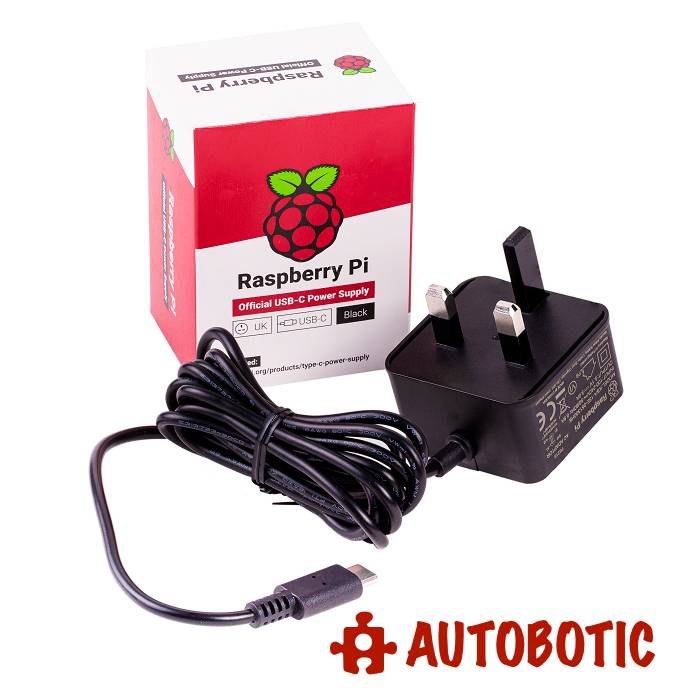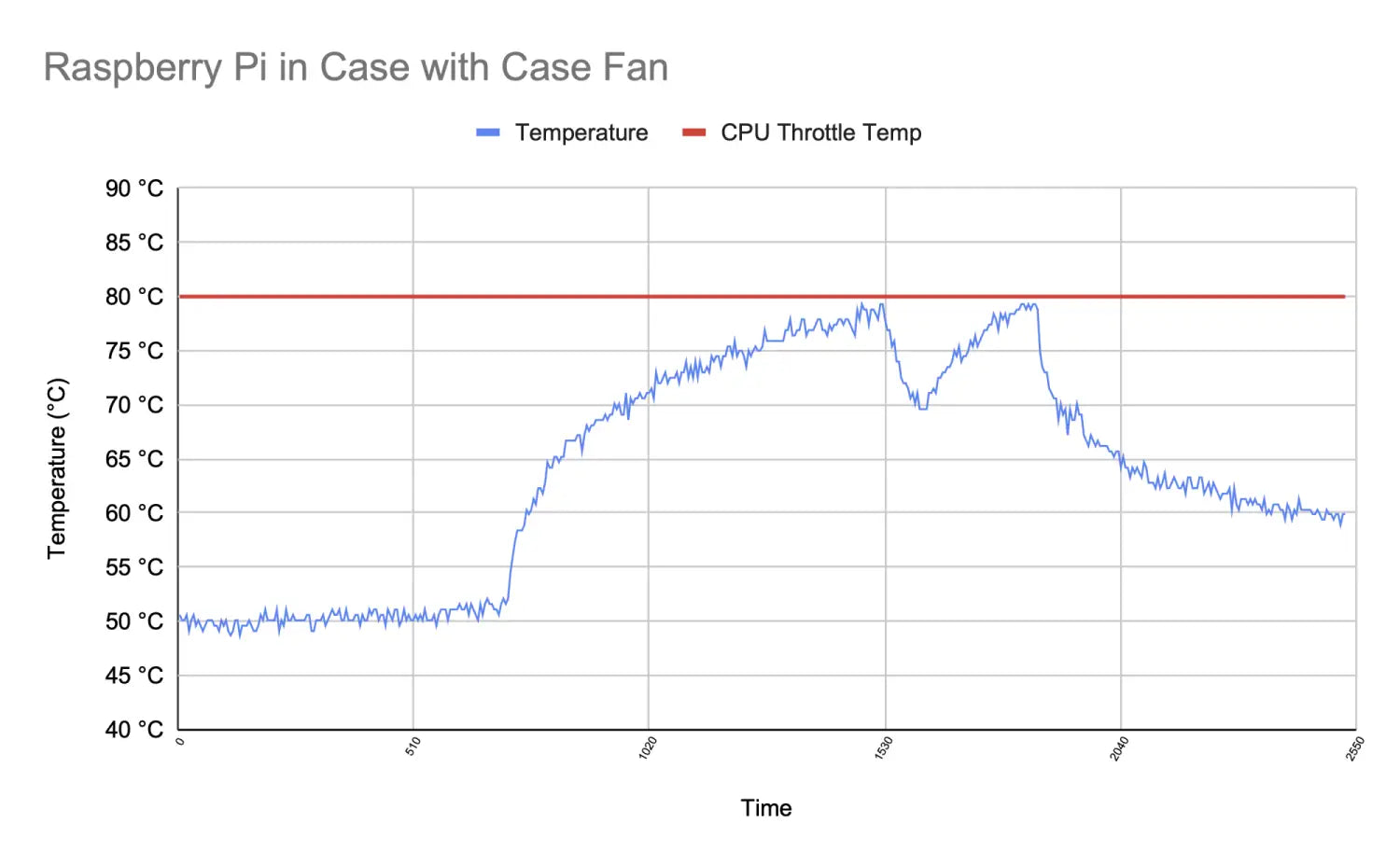
Raspberry Pi 4 8gb Ram Starter Kit
Guaranteed Safe Checkout
This is very basic starter kit for raspberry pi which includes all essential of raspberry pi for example casing, adapter, memory card and data cables.
Raspberry Pi 4 Model B is the latest product in the popular Raspberry Pi range of computers. It offers ground-breaking increases in processor speed, multimedia performance, memory, and connectivity compared to the prior-generation, while retaining backwards compatibility and similar power consumption. For the end user, Raspberry Pi 4 Model B provides desktop performance comparable to entry-level x86 PC systems.
- 1.5 GHz High-performance 64-bit quad-core processor
- Dual-display support at resolutions up to 4K
- Hardware video decode at up to 4Kp60
- 8GB of RAM
- Dual-band 2.4/5.0 GHz wireless LAN & Bluetooth 5.0
- Gigabit Ethernet, USB 3.0
- PoE capability (via a separate PoE HAT add-on)
2. Raspberry Pi 4 Model B Official Casing (Made in UK) Black
- Refer product SKU code BUL4303-0002 for details
3. SanDisk 32GB MicroSD Card Class 10 With NOOBs
- Maximize the performance of your Raspberry Pi with the SanDisk Ultra A1 microSD Class10 Memory Card with transfer read speeds of up to 120MB/s
- Rated A1 for faster performance
- Loaded with the latest version of NOOBS
- Raspbian is pre-installed (Able to install without internet)
- Choose Raspbian Full for installation
- With Storage Case Holder
- Remarks:

- Did not support multiboot.
- There have several OS for choose, but only one OS can be installed on SD Card.
- Other OS will require internet connection.
- For change OS, pressing SHIFT key while Raspberry Pi Logo screen is shown will bring you to the OS selection table.
- Previous OS files will be completely deleted after new OS is choosen.
- Latest version NOOBS will be installed on SD Card. The picture only for demonstration purpose.
4. Official Black Power Adapter for Raspberry Pi 4 15W (DC 5V, 3A) UK Plug
- Refer product SKU code BUL4304 for details
5. USB Micro SD Card Reader
- Refer product SKU code BGG3810 for details
6. Micro HDMI to HDMI Cable for Raspberry Pi 4 (1 meter)
- Refer product SKU code BUL4331-0002 for details
7. Raspberry Pi 4 Case Fan
- Refer product SKU code BUL4572 for details
PACKAGE INCLUDES
- 1 x Raspberry Pi 4 Model B Board (8GB RAM)
- 1 x Official Casing (Made in UK) Black
- 1 x SanDisk 32GB MicroSD Card Class 10 With NOOBs
- 1 x 15W Black Official Power Adapter for Raspberry Pi 4 (DC 5V, 3A) UK Plug
- 1 x USB Micro SD Card Reader
- 1 x Micro HDMI to HDMI Cable for Raspberry Pi 4 (1 meter)
- 1 x Raspberry Pi 4 Case Fan
-
1 x Raspberry Pi 4 Model b Heatsink






Package Includes:
- 1x raspberry pi 8gb ram
- 1x 32gb memory Card
- 1x power adapter
- 1x casing
- 1x fan
Fan Specs
Some people are interested in knowing exactly what fan is used, and how big it is, so here's an up-close picture:

It looks like this is the AD0205MX-K50 2.5cm 2506 25x25x6mm DC5V 0.13A fan, and from AliExpress, at least, it costs ~$4. It is the 7000 rpm, which according to the spec sheet is the quietest version of that fan model.
Installing the fan
I love how the box has the installation instructions right on the outside. Regardless of how well the fan works, the box designer deserves a shout-out:

To install the fan, pop off the top of the Pi case, line up the Case fan inside the top of the case, and push it in until the tabs click into place. Plug the red, black, and blue wires into the Pi's GPIO header like it shows on the side of the box.
The Case Fan also includes a little heatsink you can stick on top of the system on a chip. If you don't, the Case Fan alone still keeps the Pi from throttling, but spreading the heat using this heat sink makes the fan's job a little easier, so I stuck mine on.
Pop the top cover on the case, and the Pi is good to go!
The fan intake and exhaust are the gaps around the USB and network jacks, and the gap around the microSD card slot and the other ports on the side of the Pi 4, respectively. Read Gordon Hollingworth's explanation about why this was ultimately chosen. It would definitely be better to have actual vents, but the airflow is adequate using this technique to keep the Pi cool using the fan.
Here's a preview of what it looks like on a thermal camera. You can see it still gets slightly warm on top, even with the fan going:

Fan software controls
To support the hardware, a new Pi OS update released on December 2 that made it easy to configure options for the Fan, like which GPIO port the blue wire is plugged into, or what temperature the Pi should reach before the fan is powered up.
I enabled the fan in the Pi Configuration utility, and left the defaults, which are pin 14 and 80 degrees celsius:

If you want to configure the fan settings in the boot config.txt file, the settings are:
dtoverlay=gpio-fan,gpiopin=14,temp=80000
Testing the fan
Here's a graph of the Pi running with the fan set to run at 80 degrees during a 20 minute stress test using the Pi CPU stress script I maintain on GitHub.

And wouldn't you know, the fan works!
You can see the point where the fan kicked in and kept the Pi from throttling before it reached 80°C. At no point when I had the fan installed did the Pi throttle its CPU.
I ran the same test without the case fan installed, and the Pi started throttling around 9 minutes into the CPU stress test:

In both cases, the Pi will behave similarly until the set temperature is reached when the Case Fan turns on.
I could compare the Case Fan to other Pi cooling solutions I tested before, but I don't think that's too important here. The Case Fan is built to do one thing: keep the Pi 4 from throttling when it's inside the official Pi 4 case. And it does that.
So it's a good improvement, but the most important thing for me, especially since I'm used to the blissful silence of my fanless Flirc cases, is how loud the fan is when it runs, and how often it runs.
How loud is the fan?
How loud is the fan?
To test how loud it is, I used the dB Meter app on my iPhone, and put the iPhone a few inches to the left of the Pi in the case:
A little unpleasant, and it has a high pitched whine that reminds of of the sound you get in an unbalanced audio system with a bit of electrical interference.
In the video Raspberry Pi Case Fan - How Loud is it?!, I also compare that sound to the sound of my 5v 'PiFan' and the blissful silence of a passively-cooled Flirc case.
When you're dealing with fans that cost less than five dollars, you're not going to get some silent noctua-quality fan—you're more worried about controlling the temperature than the noise. But it is something to consider. The smaller the fan, the more likely it has some annoying pitch.
But there is good news. If you set the fan to only come on at 80°C, then it seems to only have to run for 30 to 60 seconds every three to five minutes if the Pi is under constant one hundred percent load.
It cools it down to around 70 degrees, then shuts off until the Pi hits 80 degrees again.
It's a reliable enough compromise that I'd recommend it to anyone using the official case. But if the Pi Foundation plans on making a similar case for the next Raspberry Pi, I hope they consider the thermals in the case design itself, and either build a passive heat sink into the case like the Flirc, or build a fan into the design of the case itself, instead of as an addon.
Conclusion
If you already use the official Pi 4 case, then for five bucks, the Case Fan isn't a bad deal. It keeps the Pi from throttling, and only kicks in under the heaviest loads.
But it does sound a little annoying and makes its presence known.
I'd still recommend using a different case, like my favorite, the Flirc case, or finding other creative ways to mount your Pi 4 so it keeps its cool without a noisy little fan.
